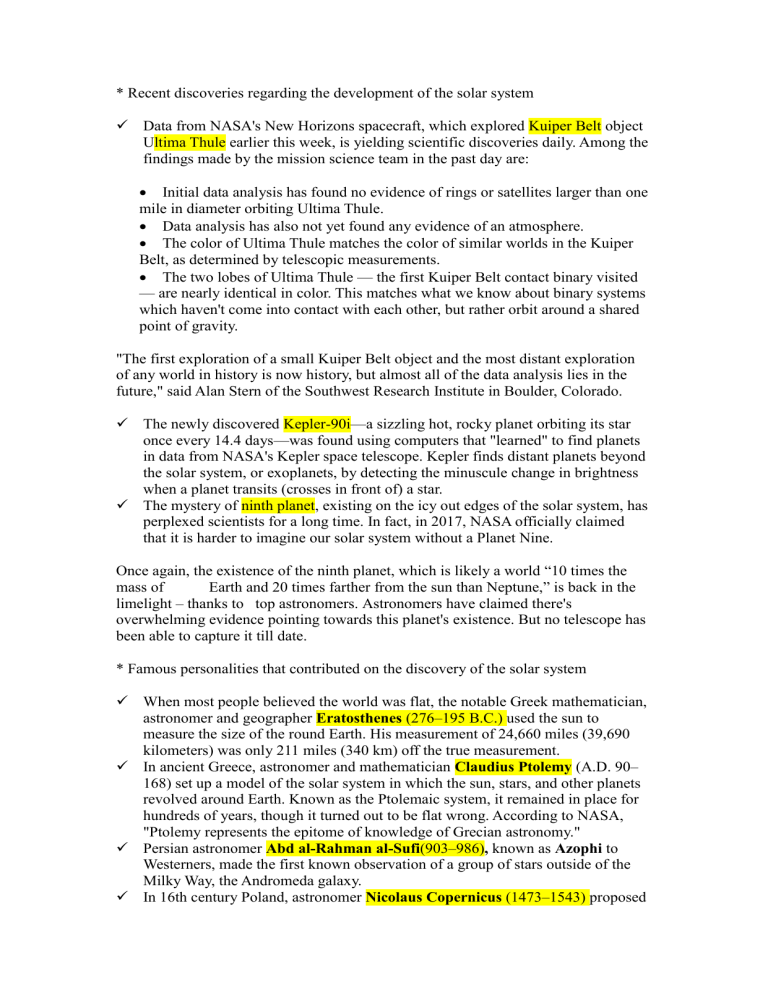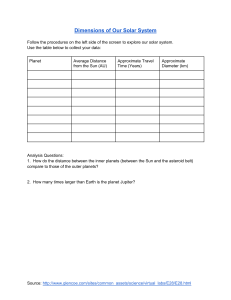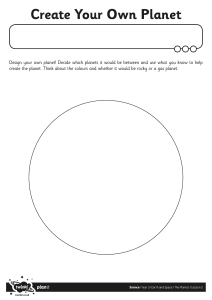
* Recent discoveries regarding the development of the solar system Data from NASA's New Horizons spacecraft, which explored Kuiper Belt object Ultima Thule earlier this week, is yielding scientific discoveries daily. Among the findings made by the mission science team in the past day are: Initial data analysis has found no evidence of rings or satellites larger than one mile in diameter orbiting Ultima Thule. Data analysis has also not yet found any evidence of an atmosphere. The color of Ultima Thule matches the color of similar worlds in the Kuiper Belt, as determined by telescopic measurements. The two lobes of Ultima Thule — the first Kuiper Belt contact binary visited — are nearly identical in color. This matches what we know about binary systems which haven't come into contact with each other, but rather orbit around a shared point of gravity. "The first exploration of a small Kuiper Belt object and the most distant exploration of any world in history is now history, but almost all of the data analysis lies in the future," said Alan Stern of the Southwest Research Institute in Boulder, Colorado. The newly discovered Kepler-90i—a sizzling hot, rocky planet orbiting its star once every 14.4 days—was found using computers that "learned" to find planets in data from NASA's Kepler space telescope. Kepler finds distant planets beyond the solar system, or exoplanets, by detecting the minuscule change in brightness when a planet transits (crosses in front of) a star. The mystery of ninth planet, existing on the icy out edges of the solar system, has perplexed scientists for a long time. In fact, in 2017, NASA officially claimed that it is harder to imagine our solar system without a Planet Nine. Once again, the existence of the ninth planet, which is likely a world “10 times the mass of Earth and 20 times farther from the sun than Neptune,” is back in the limelight – thanks to top astronomers. Astronomers have claimed there's overwhelming evidence pointing towards this planet's existence. But no telescope has been able to capture it till date. * Famous personalities that contributed on the discovery of the solar system When most people believed the world was flat, the notable Greek mathematician, astronomer and geographer Eratosthenes (276–195 B.C.) used the sun to measure the size of the round Earth. His measurement of 24,660 miles (39,690 kilometers) was only 211 miles (340 km) off the true measurement. In ancient Greece, astronomer and mathematician Claudius Ptolemy (A.D. 90– 168) set up a model of the solar system in which the sun, stars, and other planets revolved around Earth. Known as the Ptolemaic system, it remained in place for hundreds of years, though it turned out to be flat wrong. According to NASA, "Ptolemy represents the epitome of knowledge of Grecian astronomy." Persian astronomer Abd al-Rahman al-Sufi(903–986), known as Azophi to Westerners, made the first known observation of a group of stars outside of the Milky Way, the Andromeda galaxy. In 16th century Poland, astronomer Nicolaus Copernicus (1473–1543) proposed a model of the solar system that involved the Earth revolving around the sun. The model wasn't completely correct, as astronomers of the time struggled with the backwards path Mars sometimes took, but it eventually changed the way many scientists viewed the solar system. Using detailed measurements of the path of planets kept by Danish astronomer Tycho Brahe, Johannes Kepler (1571–1630) determined that planets traveled around the sun not in circles but in ellipses. In so doing, he calculated three laws involving the motions of planets that astronomers still use in calculations today. However, closed minds put Kepler's work at risk. American astronomer William K. Hartmann (born 1939) put forth the most widely accepted theory on the formation of the moon in 1975. He proposed that, after a collision with a large body scooped, debris from the Earth coalesced into the moon. Stephen Hawking (born 1942) has made many significant insights into the field of cosmology. He proposed that, as the universe has a beginning, it will likely also end. He also suggested that it has no boundary or border. Despite being viewed as one of the most brilliant minds since Einstein, many of Hawking's books and lectures are steered toward the general public as he seeks to educate people about the universe they live in. * How many times does the planet revolve/ circulate? A year is defined as the time it takes a planet to complete one revolution of the Sun, for Earth this is just over 365 days. This is also known as the orbital period. Unsurprisingly the the length of each planet’s year correlates with its distance from the Sun as seen in the graph above. The precise amount of time in Earth days it takes for each planet to complete its orbit can be seen below. Mercury: 87.97 days (0.2 years) Venus : 224.70 days (0.6 years) Earth: 365.26 days(1 year) Mars: 686.98 days(1.9 years) Jupiter: 4,332.82 days (11.9 years) Saturn: 10,755.70 days (29.5 years) Uranus: 30,687.15 days (84 years) Neptune: 60,190.03 days (164.8 years) * What is the planet that has extreme storm? By the time you reach gas giant Saturn and its beautiful rings, you are really far from the Sun – about 900 million miles. That's almost twice as far out as Jupiter. That distance comes with a freezing average temperature of about -285℉. The most familiar weather in the solar system is actually on Saturn's largest moon, Titan. Scientists believe that Titan experiences seasons, has clouds that rain and has an atmosphere made largely of nitrogen, just like ours. Unfortunately, rather than a water cycle, Titan cycles a chemical called methane. The rain that falls from the clouds is methane, and it falls into lakes, rivers and seas of methane. And Titan is far too cold for human tourists. One of the most distinctive features in the solar system is the Great Red Spot of Jupiter. A giant storm that swirls through the atmosphere of the planet, it was first observed by astronomer Jean-Dominique Cassini in 1655 and has been raging continuously ever since. However, imaging from the Pioneer, Cassini and Galileo spacecraft, as well as the Hubble telescope, has shown scientists that the GRS is not the only storm out there. * Nazca Lines in Peru The Nazca Lines are a group of very large geoglyphs formed by depressions or shallow incisions made in the soil of the Nazca Desert in southern Peru. They were created between 500 BC and 500 AD.




